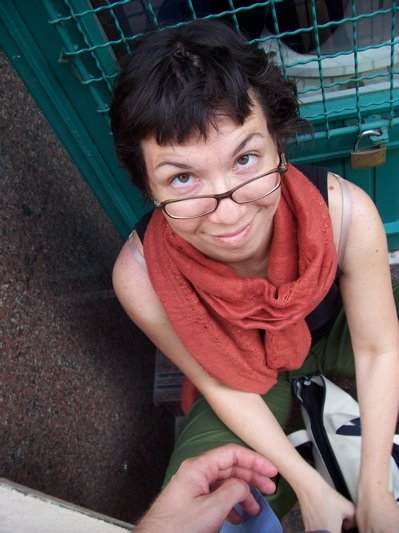My dreams of becoming an archeologist were shit-canned, but not my love for ruins. A few years back in Cappadocia, Rick watched me split my head open in an early Christian monastery. I stupidly ventured into a dark room on the second floor without a flashlight, and slipped trap-door style into a 10 foot hole. The glasses were broken, the forehead gashed. The boy nearly had a heart attack before bravely rescuing me. Still, earlier in the day we had visited an underground city and explored ancient cave tombs. On balance, it was one of the best days of my life.

So last weekend in Split, on Croatia’s Adriatic coast, I was walking on air. Ruins! Beaches! Winding Medieval Streets! Palm Trees! Good Pizza! What more do you WANT in life?

Split is incredible. The core of the city is the enormous palace of Roman Emperor Diocletian (245-312). Centuries later, when the coast was invaded by barbarians, the locals moved into the abandoned palace ruins. They never moved out. They built a medieval city inside: churches leaning against thick Roman walls, winding streets along the ancient palace hallways.


The mausoleum of Diocletian (a real “throw the Christians to the lions” kind of Emperor) was transformed into the town Cathedral, complete with Byzantine statues and Renaissance belltower. The Temple of Jupiter became the town baptistery.
A tip of the hat to Barmaljova for showing us how great it is to take video footage on your camera...I took this!
According to Rebecca West’s amazing Black Lamb Grey Falcon: “After the war [World War I] there was a movement to evacuate Split and restore the palace to its ancient magnificence by pulling down the houses that had been wedged in between its walls and columns; but surveyors very soon found out that if they went all Diocletian’s work would fall to the ground. The people that go so quickly and darkly about the streets have given the stone the help it gave them.”


And so Diocletian’s palace is in some ways one of the best preserved ruins of the Roman world. The little shops and hotels and apartments and churches and cafes of Split’s city center rest on the empty cellars of Diocletian’s home, where you can still trace the layout of the vast palace that was once stood above.


Split spilled out of the Palace walls, of course. A medieval and Renaissance town grew right outside the old stone gates.

In later years, other layers of city have grown like tree rings around the center. The town with ancient Rome at its center has an outside rim of huge Communist block housing. Just like you can read dry years and wet years, forest fires and earthquakes in the rings of a tree, in Split you can see history frozen in marble and stucco and concrete.

Hog heaven.


1 comment:
The multi-talented "Ganch" should be authoring travel books. Wonderful words and photos of a beautiful find. I am truly impressed!...Otto
Post a Comment